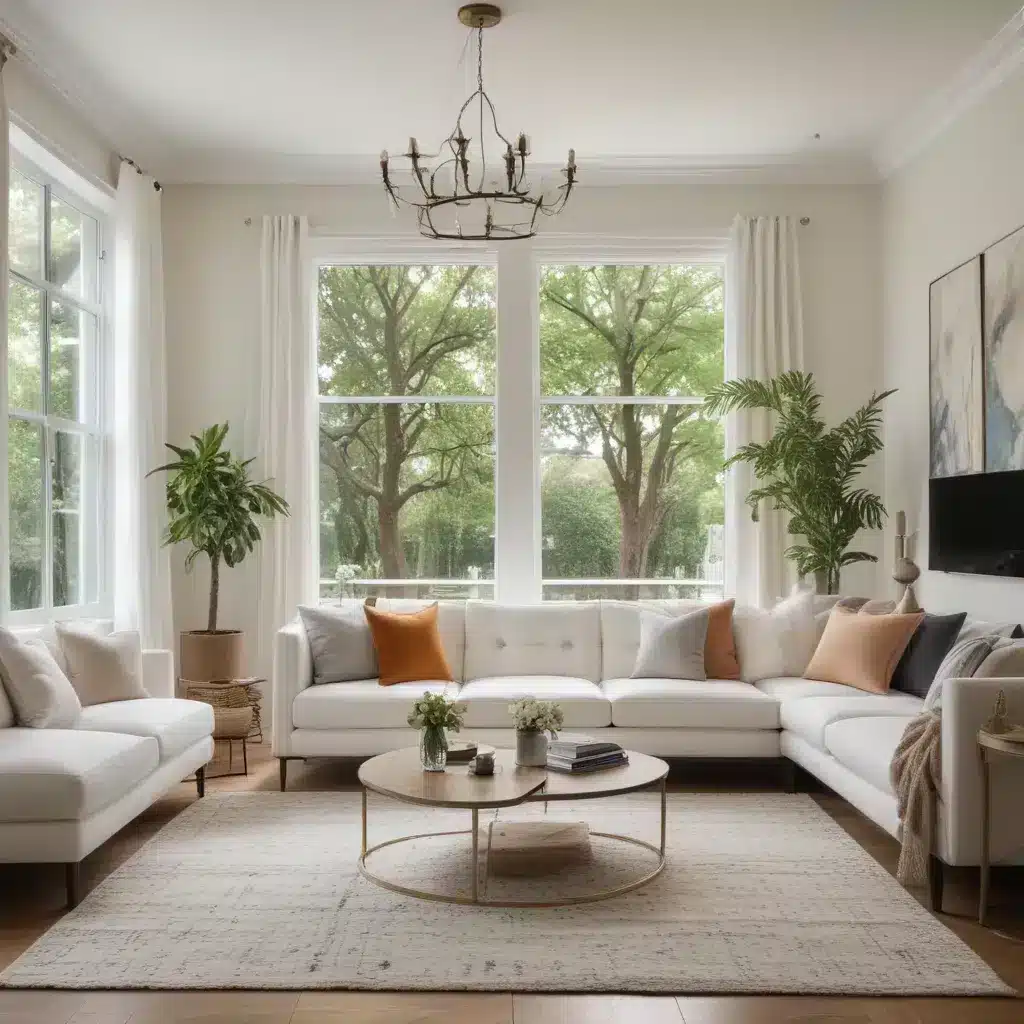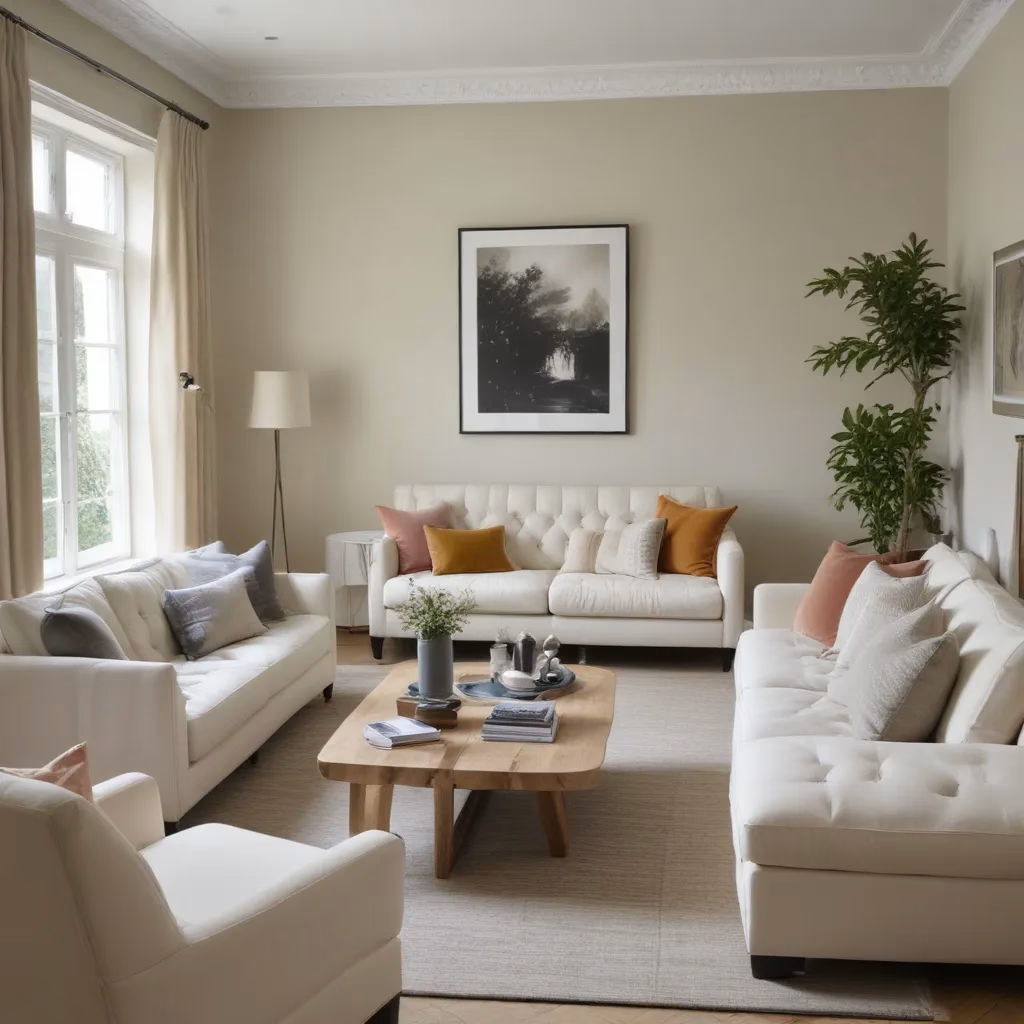The Rule of Threes: How Limiting Decor Creates the Illusion of Space
Have you ever walked into a room and been instantly captivated by its sense of openness and airiness? Or perhaps you’ve admired a meticulously designed space, marveling at how it manages to feel both cozy and spacious at the same time. If you’ve found yourself in this situation, chances are the designer behind that room was following a fundamental principle known as the “rule of threes.”
Now, I know what you’re thinking – the rule of threes? Isn’t that just some arbitrary design concept that interior designers use to sound more sophisticated? Well, my friend, let me tell you, there’s a whole lot more to this “rule” than meets the eye. In fact, mastering the art of the rule of threes could be the key to transforming even the most cramped and cluttered space into a serene oasis of calm.
Unlock the Power of Minimalism
At the heart of the rule of threes lies the concept of minimalism. Now, I know, I know – the mere mention of the word “minimalism” can send some people running for the hills. It conjures up images of stark, cold spaces devoid of any personality or warmth. But I’m here to tell you that minimalism, when done right, can be the secret weapon in your quest for a beautifully designed home.
The key is to embrace the idea of “less is more.” By limiting the number of decor elements in a space, you create a sense of balance and harmony that can make even the smallest room feel spacious and airy. Think about it – when you have too many knickknacks, throw pillows, and tchotchkes vying for your attention, the room can feel cluttered and overwhelming. But when you pare down to just a few carefully curated pieces, the eye has room to breathe and the space suddenly feels much more open and inviting.
The Magic of Threes
So, what exactly is the rule of threes, and how can you use it to your advantage? In a nutshell, the rule states that grouping objects in threes creates a more visually appealing and balanced composition. It’s a principle that’s been used by artists, designers, and even marketing experts for centuries.
Think about it this way – when you have a collection of items, your brain is naturally drawn to patterns and symmetry. By grouping them in threes, you create a sense of harmony and rhythm that’s just naturally pleasing to the eye. It’s a bit like the way your ears perk up when you hear the classic “beginning, middle, end” structure in a good story.
But the magic of the rule of threes goes beyond just visual appeal. It also has a powerful psychological effect on the way we perceive space. By limiting the number of decor elements in a room, you create the illusion of more open space, making the room feel larger and more airy than it actually is.
Mastering the Technique
Now that you know the power of the rule of threes, it’s time to put it into practice. Here are some tips to help you master the technique:
-
Choose Your Focal Points: Start by identifying the key elements in the room that you want to showcase. These could be a piece of artwork, a gorgeous sofa from Sofas Spectacular, or a stunning architectural feature. Once you’ve identified your focal points, build your decor around them, using the rule of threes to create a harmonious and balanced composition.
-
Group Similar Items: When arranging your decor, look for items that share a common theme or style. Whether it’s a trio of vases, a collection of framed prints, or a group of candles, grouping similar items in threes can create a cohesive and visually appealing display.
-
Vary the Sizes: To add depth and interest to your groupings, try to vary the sizes of the items you’re using. For example, you might have a tall vase flanked by two smaller ones, or a large piece of artwork surrounded by two smaller framed prints. This creates a sense of visual rhythm that’s both pleasing and dynamic.
-
Play with Levels: Don’t be afraid to experiment with different heights and levels when arranging your decor. By placing items at varying heights, you can create a sense of depth and dimension that can make a space feel more open and inviting.
-
Embrace Negative Space: One of the key principles of the rule of threes is the importance of negative space – the empty areas between and around your decor elements. Don’t be afraid to leave some breathing room, as this can help to create a sense of balance and tranquility in the space.
Putting it All Together
To illustrate the power of the rule of threes, let’s take a look at a real-world example. Imagine a cozy living room with a stunning custom sofa as the focal point. To create a harmonious and balanced design, you might group three decorative pillows in complementary colors and patterns on the sofa. On the coffee table in front of the sofa, you could display a trio of artful vases or candles, varying the heights and sizes to add visual interest.
On the wall above the sofa, you could hang a large piece of artwork, flanked by two smaller framed prints or photographs. And on the shelves or side tables, you could arrange a collection of three books, vases, or other decorative objects.
By limiting the number of decor elements and grouping them in threes, you create a sense of order and cohesion that can make even the most compact living room feel spacious and inviting. It’s a simple technique, but one that can have a profound impact on the way we perceive and experience the spaces we inhabit.
So, the next time you’re feeling overwhelmed by the clutter in your home, take a step back and consider the power of the rule of threes. With a little creativity and a commitment to minimalism, you can transform even the most cramped and cluttered space into a true oasis of calm and serenity.




